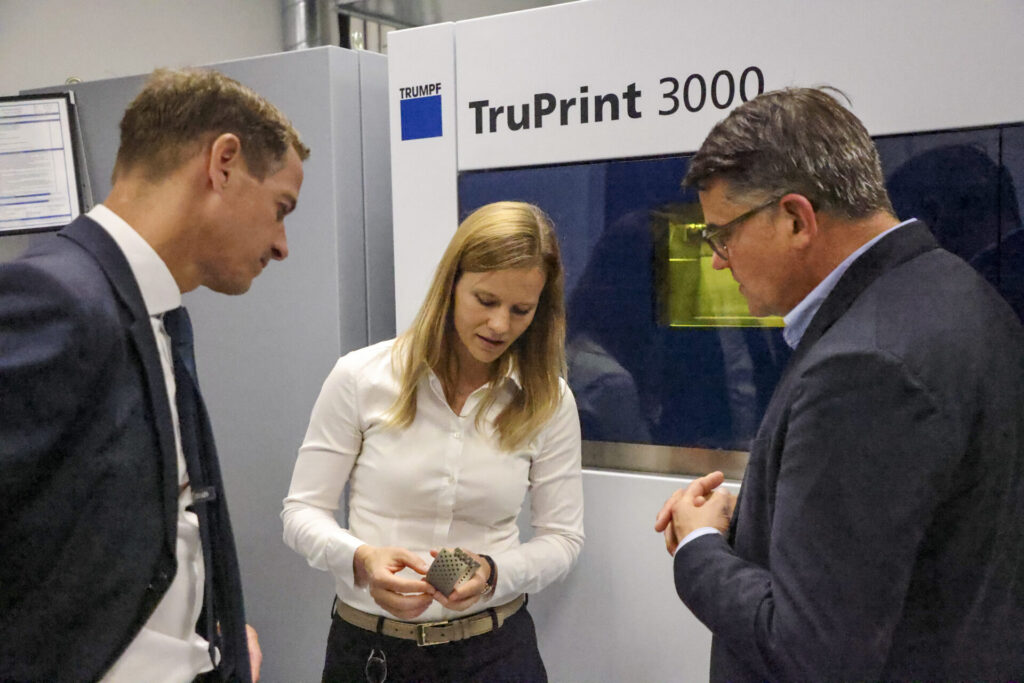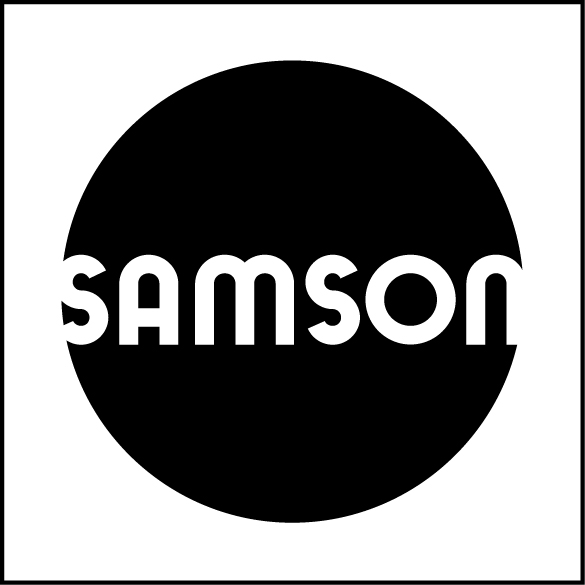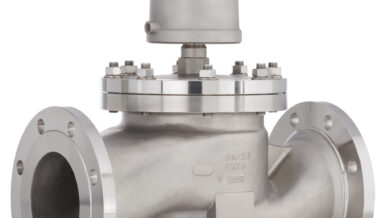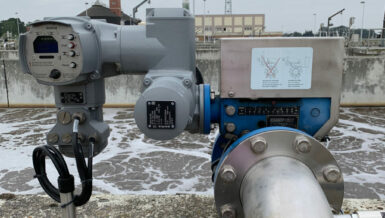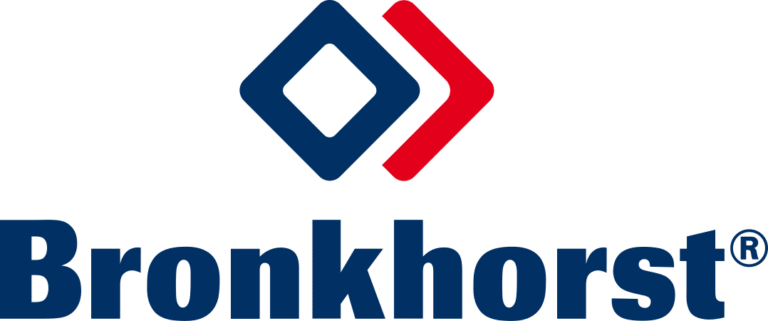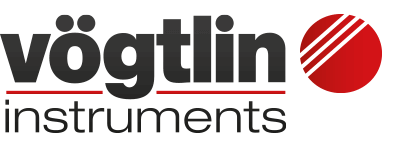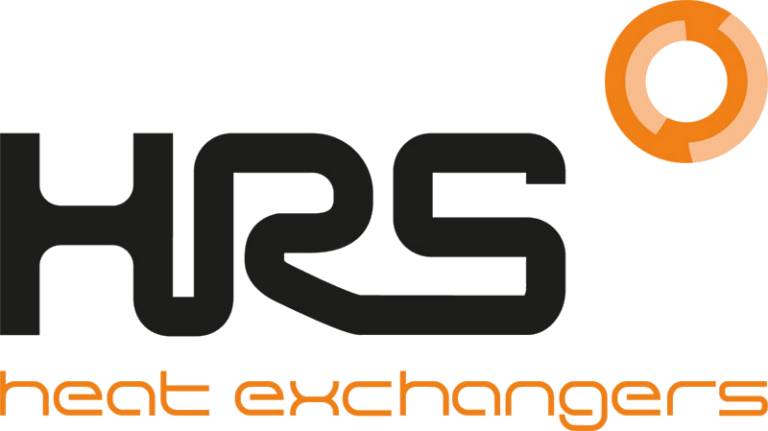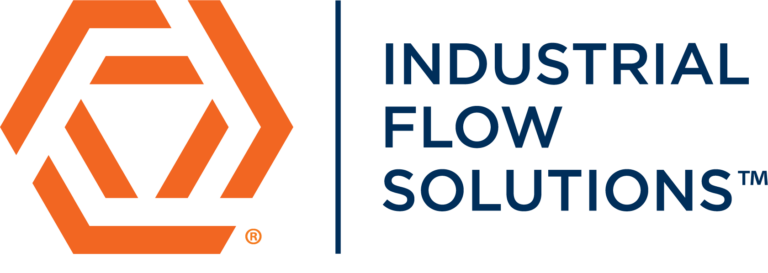The control valves are expected to fulfil the requirements that apply in these applications in the long term. As a result, SAMSON’s first-rate process automation products are continually upgraded by integrating innovations in digitalization, flow simulation, design and control engineering. Technological innovations, such as additive manufacturing, are key to this development process as they open up many new opportunities beyond traditional subtractive manufacturing methods. In this testimonial, the experience made by SAMSON will help shine a light on the challenges that companies face when placing on the market additively manufactured pressure equipment series.
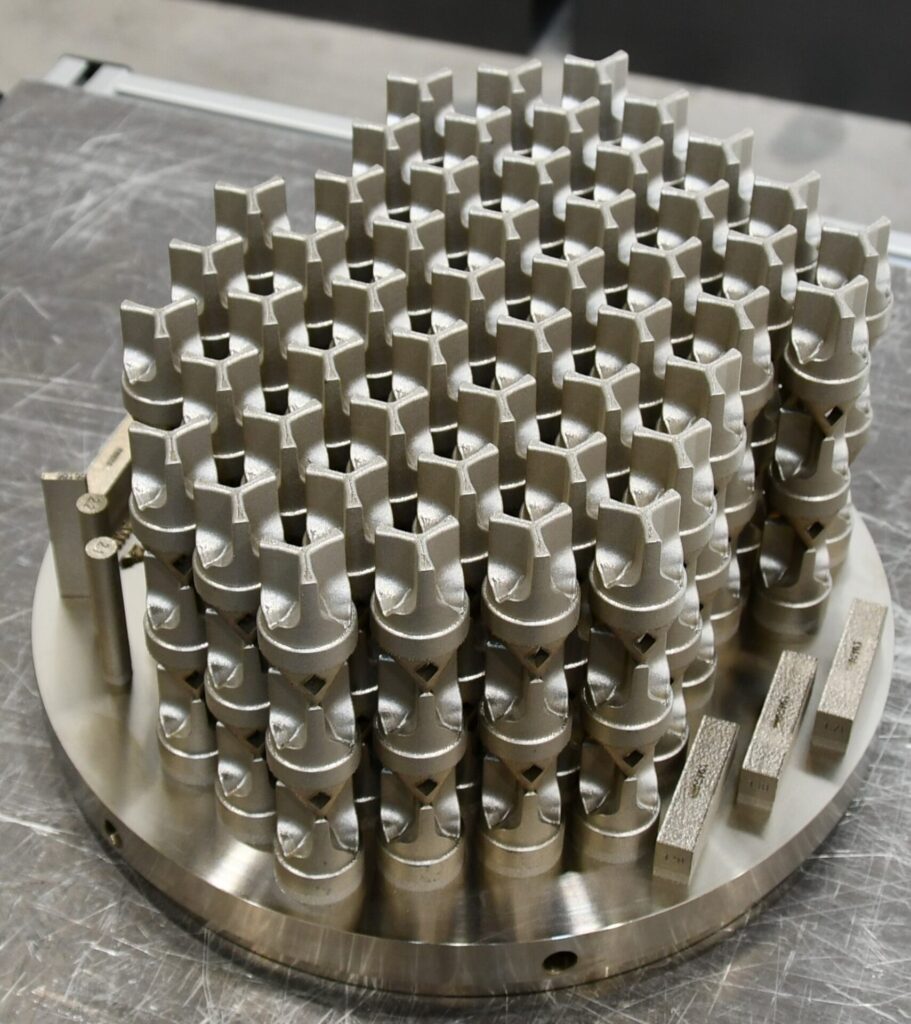
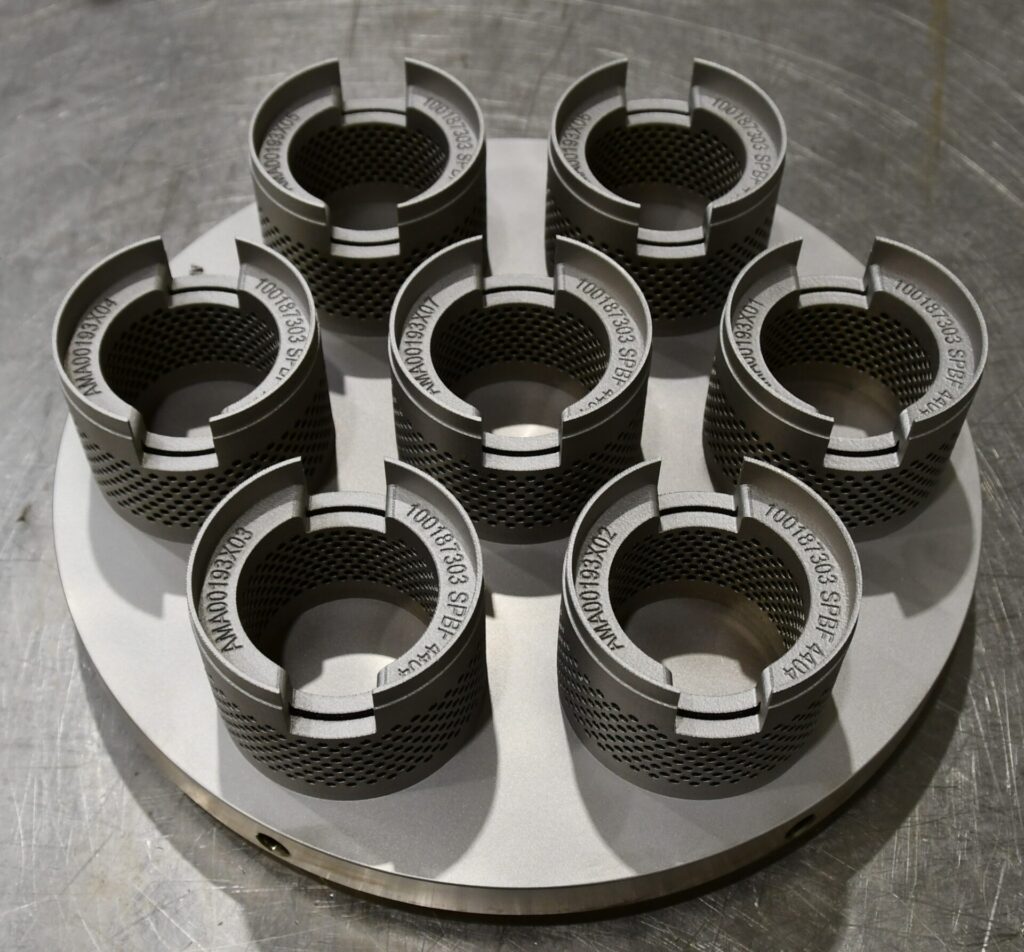
European Pressure Equipment Directive
Similar to vessels, piping or unfired pressure vessels, valves and final control elements are treated as ‘pressure equipment’ if they are subject to a maximum allowable pressure greater than 0.5 bar. Depending on their role in the supply chain, pressure equipment manufacturers must ensure a high level of protection of public interests (such as health, the safety of persons, domestic animals and property) and guarantee fair competition on the European Union market[1]. The applicable requirements are stipulated in the European Pressure Equipment Directive 2014/68/EU (PED). Consequently, the PED is a key standard to be observed by pressure equipment manufacturers. Specific requirements for implementation can be found in harmonized product standards, such as EN 16668 for industrial valves, EN 13480 for metallic industrial piping or EN 13445 for unfired pressure vessels; these standards themselves reference other supporting harmonized standards. The standard requirements apply to the material properties as well as the manufacturing procedures. Regular reviews and audits are prescribed for these manufacturing procedures. Products of certain hazard classifications (PED categories I to IV) must additionally be certified by the applicable Notified Body organizations and bear a CE marking to be placed on the EU market.
Challenges
Manufacturers will normally select the material for a certain part from a supporting harmonized material standard. As a result, it can be assumed that the selected material complies with the applicable safety requirements and technical properties stipulated in the standard. Manufacturers may use them for pressure equipment sizing to ensure that the fundamental safety requirements according to PED are complied with. However, the harmonized material standards do not address manufacturing procedures that may affect the material properties (such as welding, forming), nor do they cover whether a material is suitable for a certain device or field of application. These issues must be evaluated separately. Nonetheless, the use of harmonized materials has enormous benefits – which brings us to one of the major challenges when using additive manufacturing methods: there are no harmonized standards for additively manufactured materials (yet).
A material’s chemical composition is defined by the feedstock (metal powder) used. The metal’s molecular structure and mechanical properties, however, essentially depend on the additive manufacturing procedure applied to make a blank (semi-finished product). As a result, everybody who makes additively manufactured blanks is considered a material manufacturer within the meaning of the PED. And everybody who further processes an additively manufactured blank into a finished part or ready-to-be-sold final product is considered an equipment manufacturer and distributor of additively manufactured pressure equipment within the meaning of the PED. This is comparable to the process chain involved in manufacturing cast parts. Therefore, other PED-compliant solutions must be applied to harmonize materials and finished products within the meaning of the PED.
Requirements placed on the overall process
SAMSON has opted to implement the alternative solution stipulated in the PED for materials that are not referenced in harmonized material standards. With this approach, materials are qualified based on a Particular Material Appraisal (PMA). Additional support is provided by prEN 13445-14, DIN TS 17026 and the EN 764-4 and EN 764-5 horizontal standards.
The PMA is issued by SAMSON in its role as an equipment manufacturer for every additively manufactured material. In addition to the requirements placed on the essential material coefficients, the PMA contains further data relating to the material, material manufacturer, product type and shape as well as specific testing and sampling.
To harmonize an additively manufactured material using a standardized PMA, the material specifications of the material manufacturer who made the additively manufactured blank are referenced and the manufacturer must confirm and document compliance with the material specifications by issuing a certificate of specific product testing (3.1 inspection certificate acc. to DIN EN 10204, or in collaboration with a notified body: 3.2 inspection certificate acc. to DIN EN 10204).
Additive material manufacturers wanting to implement this procedure should be ISO 9001 certified and have a certified quality management system, which has undergone a specific assessment for materials[2], for example according to Annex I (4.3) of the PED. In addition, the underlying material specifications as well as the manufacturing procedure must be covered by the scope of the material manufacturer’s certification.
As a result, the material specification serves as a stand-in document for the harmonized material standard, which does not yet exist.
Throughout the entire manufacturing process, material manufacturers must ensure traceability of the finished products – down to the feedstock batch used. Right from the beginning of the qualification and certification process, SAMSON established a clear separation between the maker of the blank (material manufacturer) and the maker of the pressure equipment (equipment manufacturer and distributor who places the equipment on the market).
This enables SAMSON to procure the additively manufactured blank from a PED-certified material manufacturer, and further process this blank and place it on the market as a PED-certified equipment manufacturer.
As SAMSON is also a certified additive material manufacturer, the company can handle the entire process inhouse – from procuring the metal feedstock to delivering the finished valve.
According to Article 4 (3) of the PED, manufacturers may place on the market only such pressure equipment operated at a very small gauge pressure or having a very low product of pressure and volume, provided the equipment was designed and manufactured in accordance with sound engineering practice.
In most valve applications, the pressure equipment exceeds this hazard classification, which means that equipment manufacturers must ensure that the equipment has been designed and manufactured in accordance with the essential safety requirements set out in Annex I of the PED.
To achieve compliance, equipment manufacturers must draw up the technical documentation referred to in Annex III and carry out the relevant conformity assessment procedure referred to in Article 14 of the PED.
After successful completion of this procedure, manufacturers draw up an EU declaration of conformity and affix the CE marking to the equipment. Certification by a relevant Notified Body is required to do so.
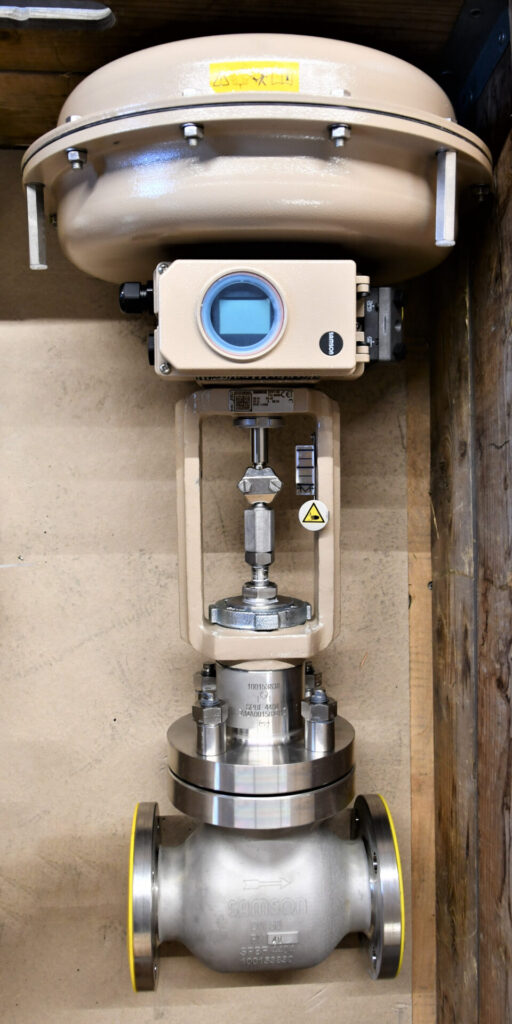
Which conformity assessment procedure is to be applied to the pressure equipment depends on its hazard level classification (Category I to IV in ascending level of hazard).
Implementation at SAMSON
For series manufacturers, it makes little sense to assess conformity based on single unit verifications (Module G) with a notified body due to the amount of work and money to be invested. Even small production series are economically viable if the additively manufactured version is designed for the same category as the traditionally manufactured version.
For initial certification, SAMSON decided to qualify its Type 3251 High-pressure Valve, which is well established on the market, in an additively manufactured Type 3251-AM version.
The standard version of the Type 3251 Valve is available in DIN and ANSI sizes from DN 15 to 500/NPS ½ to 20 and in pressure ratings from PN 16 to 400/CL 150 to 2500. The Module H conformity assessment procedure was applied to the Type 3251, which covers pressure equipment up to hazard classification in Category III.
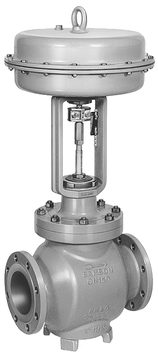
Type 3251 Valve
Pneumatic – DIN – Globe valve
- USAGE
- High-pressure service
- Low-pressure service
- On/off service
- Throttling service
Consequently, the same Module H conformity assessment procedure was performed for the new Type 3251-AM, which is available in valve sizes up to DN 100/NPS 4 and pressure ratings up to PN 400/CL 2500; the equipment was certified by TÜV-SÜD Industrie Service GmbH (Notified Body no. 0036).
Conformity assessment covers design, manufacturing and testing, which means that all areas of SAMSON are involved: sales, R&D, production and quality assurance.
In addition to the risk and hazard assessment performed for this valve type and the associated strength calculations with higher safety factors, SAMSON drew up comprehensive inspection and test plans for initial sample and pilot lot qualification. These ITPs served as guidelines for inspection of the blanks, finished parts and the completed valve assembly.
In addition to strength calculations, the following was comprised:
- FEM and CFD simulations
- Destructive testing of side samples and initial samples
- Non-destructive testing of initial samples and pilot lot specimens
- Dimensional inspections of blanks and finished parts as well as ready-assembled valves
- Function tests, leak tests, seat leakage tests, hydrostatic strength tests
- Flow rate and sound pressure level measurements at higher pressure drops
- Inspection of manufacturing requirements and markings
- Inspection of test documentation
In addition to non-destructive testing, special attention was paid to the destructive testing of specimens taken from the initial samples at different positions. Samples were taken at areas that are critical in additive manufacturing (such as critical overhangs) and at different manufacturing heights.
The results gained from initial sample testing were compared to the side samples on the printing plate and the material specifications for the printed material; assessments were performed accordingly.
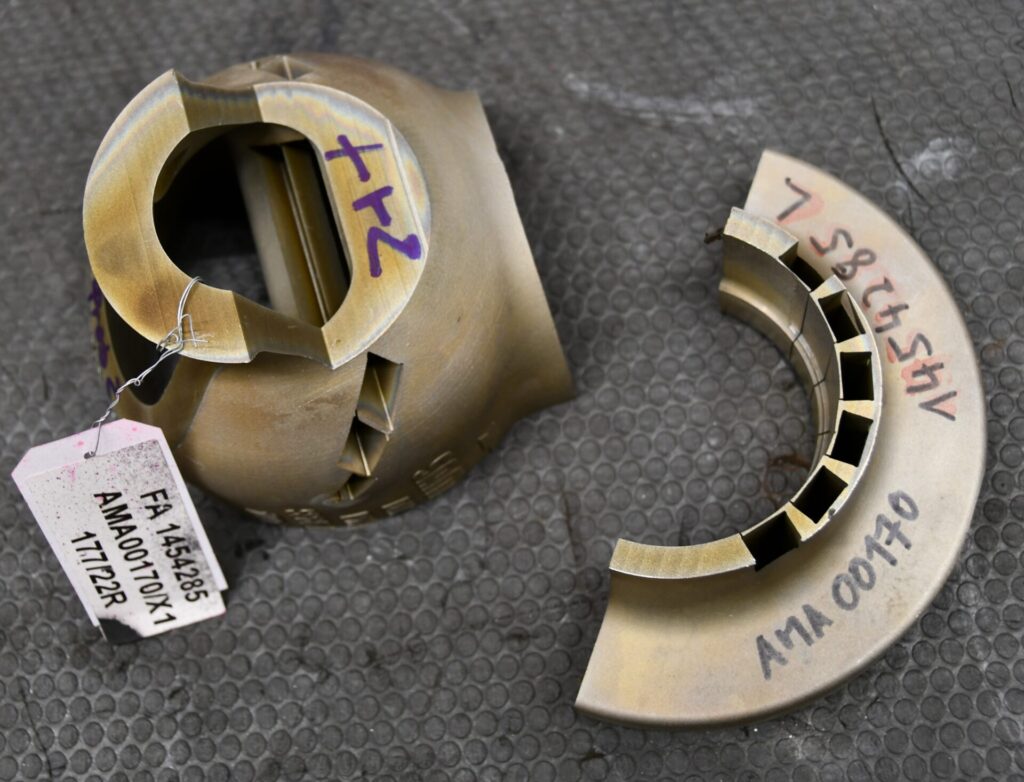
At the same time, guidelines, documented procedures, work and testing instructions as well as protocols had to be defined and implemented for the equipment made from additively manufactured materials. Interface documents were drawn up, detailing the requirements to be fulfilled by material (blank) manufacturers.
SAMSON’s focus was on quality assurance measures covering the design, manufacturing, final acceptance and inspection of pressure equipment because the assessment and certification – and ultimately the approval – of the quality assurance system by the notified body was essential to the implementation of Module H.
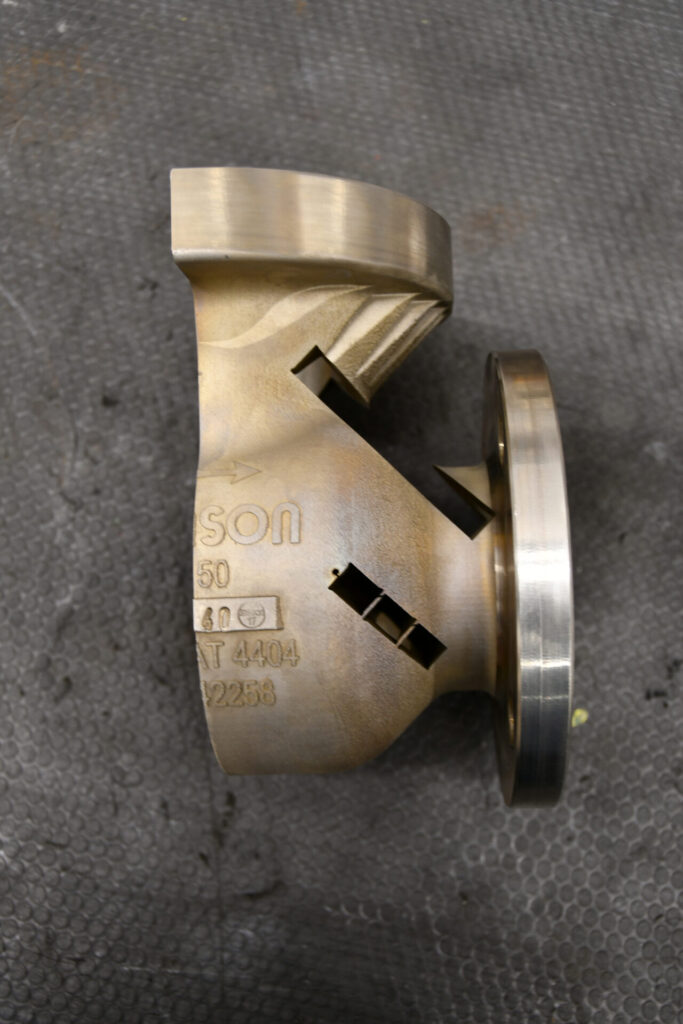
The complete technical R&D documentation had to be created, modified and linked for the new additive materials; this included material specifications, material data sheets, pressure-temperature tables, mounting and testing instructions as well as marking guidelines for equipment nameplates.
Interface documents applying to R&D, sales and customers (such as data sheets, mounting and operating instructions) and SAMSON’s in-house sales order handling procedures had to be adapted.
There is obviously a huge difference between a part ‘printed on the fly’ and an additively manufactured, comprehensively qualified and tested PED-compliant piece of pressure equipment.
This testimonial underlines that there is a controlled, viable path to the additive manufacturing of blanks and semi-finished products and their placing on the market as (components for) pressure equipment with the support of an experienced Notified Body, in this case TÜV SÜD Industrie Service GmbH. Still, a lot of time and money needs to be invested in obtaining certification as a material manufacturer for a specific additively manufactured material and additionally in being certified as a manufacturer and distributor of pressure equipment as the basis for making and selling additively manufactured pressure equipment. SAMSON has successfully completed these certification procedures at the end of last year: the company is a certified material manufacturer for additively manufactured blanks and it has obtained certification to manufacture and place on the market additively manufactured pressure equipment in compliance with Module H, Annex III of the Pressure Equipment Directive 2014/68/EU. The basis used for the conformity assessment procedure is specified in the declaration of conformity.
Authors:
Holger Eckholz (SAMSON AG), Domagoj Vnucec (SAMSON AG), Jörg Keller (TÜV SÜD Industrie Service GmbH), Martin Boche (TÜV SÜD Industrie Service GmbH)
[1] Directive 2014/68/EU of the European Parliament and of the Council of 15 May 2014 on the harmonization of the laws of the Member States relating to the making available on the market of pressure equipment, Article 17
[2] Directive 2014/68/EU of the European Parliament and of the Council of 15 May 2014 on the harmonization of the laws of the Member States relating to the making available on the market of pressure equipment, Annex I, Article 4.3



